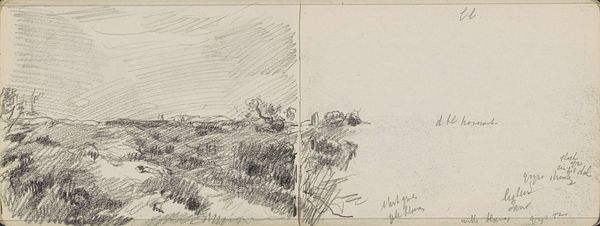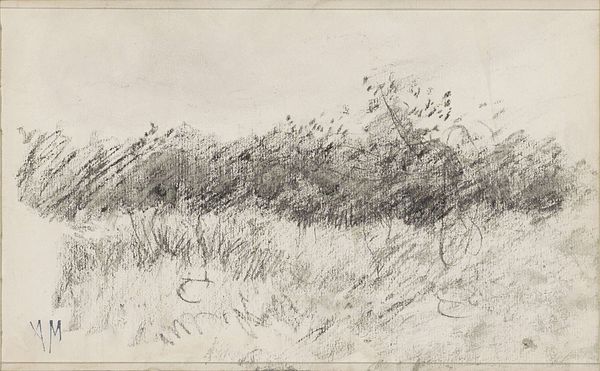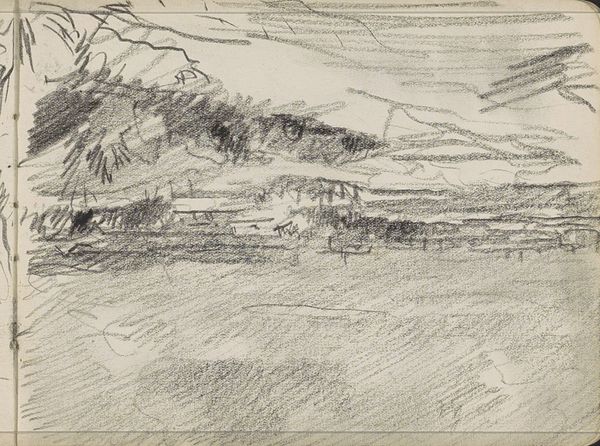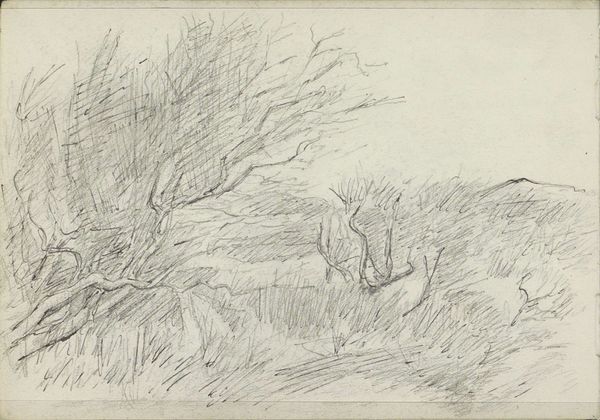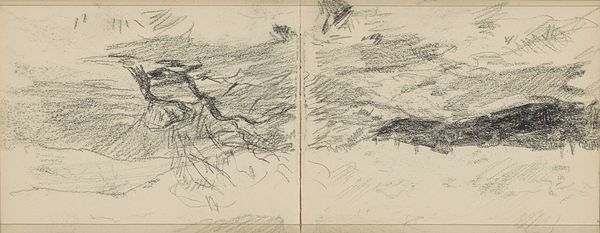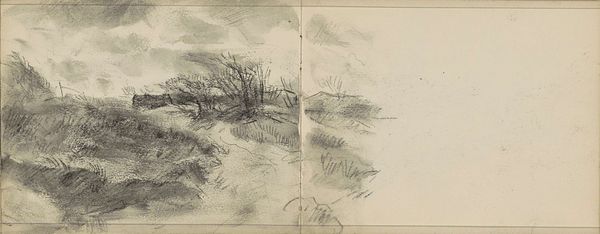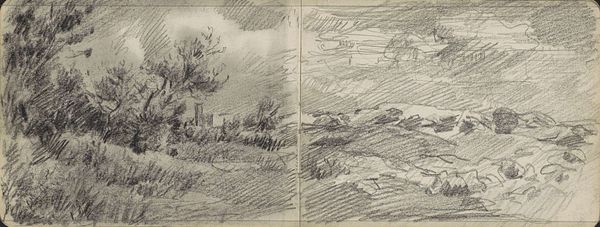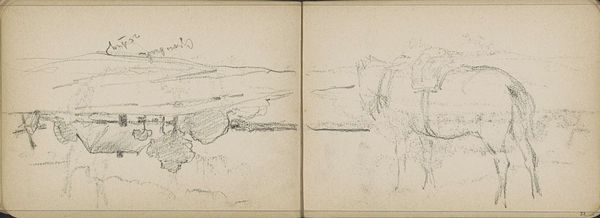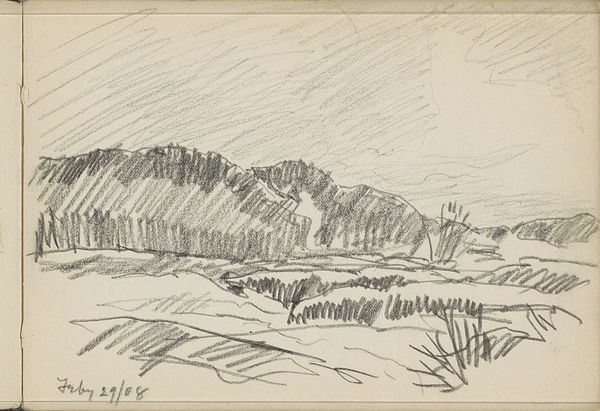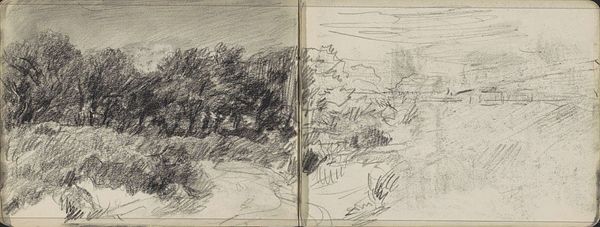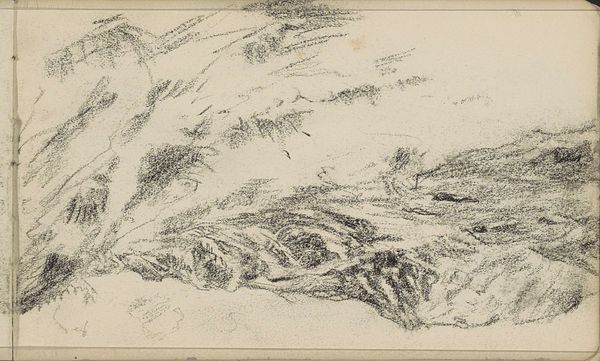
drawing, pencil
#
drawing
#
pencil sketch
#
landscape
#
pencil
Copyright: Rijks Museum: Open Domain
Curator: Welcome. Today we’re looking at Johan Antonie de Jonge’s “Landschap, mogelijk een duinlandschap”—that translates to “Landscape, possibly a dune landscape.” It was likely made between 1881 and 1927. Editor: My initial feeling? It's very immediate. A quick sketch capturing a windswept feeling, mostly created with pencil. You can practically feel the sand shifting. Curator: Sketches like these were vital to landscape artists at the time. Think of the Hague School movement. De Jonge, although lesser known, engaged with similar themes of capturing the Dutch landscape. It wasn’t just about visual representation but about national identity. Editor: Absolutely. The artist is clearly responding to the environment around him. Look at the density of the pencil strokes—it varies with the vegetation and the forms in the dunes, suggesting an intuitive engagement with the physical materials. It makes me wonder about the type of pencil used, and what paper would best render its grain. Curator: These drawings played an interesting role in the art market. Were they preliminary works, quickly dashed off and never meant for display? Or were they seen as complete artworks, offered and consumed differently from paintings? De Jonge exhibited widely, suggesting he embraced exhibiting drawings as ends in themselves. Editor: True, but thinking materially, you see how humble the resources are. Paper, pencil, a capable hand: all contribute to making art available across classes, or so one might think. What's depicted is certainly available to all, rich or poor. Curator: Indeed. The question of access and affordability certainly complicates our understanding. It also forces us to confront the hierarchies often perpetuated in art institutions. De Jonge and others perhaps unknowingly democratized image-making in small but noticeable ways. Editor: Well, this has certainly given me something to ponder, particularly in considering the labor and simple tools creating evocative depictions, questioning distinctions of high and low art. Curator: I agree, seeing art history in the unassuming landscape through a pencil, is an exciting place to conclude.
Comments
No comments
Be the first to comment and join the conversation on the ultimate creative platform.
